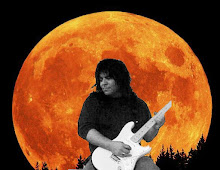There is a non-scientific law in Baseball that a player's Talent and Experience intersect between the ages of 27 and 32. 29 is a great rule of thumb for all players except relievers.
As a player starts his career, his raw talent is still growing. It grows because of experience. At a certain point in a players physical maturation, his physical talent begins to decline. Prior to that a players performance will be enhanced by experience and education. When these two factors intersect, the player has reached his Prime. (0r the best he'll ever be).
Some players have lesser longevity than others. Catchers go as long as their knees can take it. Bengie Molina is an excellent example of a player having upper body strength and lower extremity weakness. Bengie has become a player that is only useful behind the plate. Unless he hits a homerun or drives in a walk off run, Bengie is not wanted on the bases. Many Catchers don't make it past 35.
Strangly enough; 2B is one of the worst positions for longevity. The 2nd baseman is one of the busiest positions on the field. In addition to the constant sprints, 2B are constant victims of high spikes. This constant slamming into the ground leads to an early retirement age of 32. You can watch regular 2B and see that they are like clockwork.
Take Craig Biggio. He started out as an Allstar Catcher for Houston. Then he became an allstar 2b for Houston, then finally to prolong his career; he moved to centerfield.
Who has the best longevity in baseball? The reliever. Especially the left handed specialist. Or a "Loogy" (Left only one out guy) He works less than a place kicker in the NFL. It's not uncommon to see Loogy's go into their 40's.
But It's my belief that when a player has his "Prime" or "Career" season, you should have his replacement showing improvement and growth in class AA. Unless they're catchers or 2b. Then I feel they need to be in the utility role 3B/SS for the 2B and ready to go in AAA for the new catcher.
The problem with catchers is that they , like starting pitchers, need to throw or catch everyday to keep their skills sharp. (or every 5th day for a Starter).
This is the simple formula that GMs follow when offering contract extentions. This is why you see a lot of one year extentions for Catchers (like Molina) and multiple year contracts for outfielders under 30. The point of limited returns is more definable now. This is why one of the best pieces of the arbitration factor is the Team Doctor.
The Giants have about 5 serious decisions to make. 6 if you include Welmeyer.
Sincerely,
Ace
Monday, June 7, 2010
Subscribe to:
Post Comments (Atom)






No comments:
Post a Comment